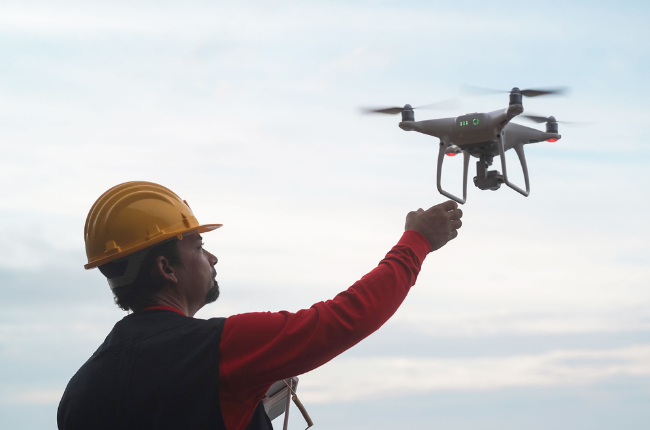Thanks to their diverse applications and benefits, more and more councils are using drones in their day-to-day operations.
In Part 1 of our two-part drone series, we consider the risks associated with contracting out drone services versus building an inhouse capability. We also explore the challenges drones pose to councils – and how to overcome the hurdles of setting up an internal drone team.
Providing his expert advice on the topic is Isaac Palmer, National Operations Manager of AVCRM.
Statewide AVCRM partnership – what it means for you
AVCRM provides aviation compliance and risk management solutions for airports and councils across Australia. The organisation supports councils in staff training, equipment purchasing, and policy and procedure implementation.
Thanks to our partnership with AVCRM, all Statewide members have FREE access to AVCRM software and the company’s drone-related advice.
Drone popularity reaching new heights
Councils across NSW are rapidly taking up the use drones for a myriad of activities – and it’s not hard to see why.
Offering an elimination or significant reduction of risk to staff safety, drones can perform asset inspections in hard-to-reach places such as water towers and other structures where a risk of fall from heights is identified. Effective use of drones can also facilitate the opportunity to reduce costs associated with working from heights training and human resources.
AVCRM notes that “Drones can survey gutters, roofing, water towers, you name it, with absolute ease. All the while presenting reduced risk – with staff remaining safely on the ground”
“In recent times, thermal imaging drones have risen in popularity. These drones are commonly used for inspecting underground tips and dumps to identify possible fire risks brewing below ground”.
The big choice: in-house or contractors?
The major choice councils face when starting to use drones is whether to build the technical skills in-house or engage an external provider.
“While both options have their merits, going in-house is a more sustainable strategy. Because drone work is so specialised, drone contractors can charge around $5,000 per day for their services.
“The other major benefit to taking these services in-house is data ownership. Drones generate vast amounts of data which councils can use for a range of purposes.
“This is one of the key reasons we’re seeing a lot of councils go down the in-house pathway,” says Isaac.
Going in-house – how big should your team be?
The set-up of your drone team and equipment purchased should be fit for purpose to your council.
“Some councils only have one drone specialist. Whereas others, such as Tamworth, have trained upwards of 20 people,” says Isaac.
“It comes down to two things. The first being funding. Obviously training and equipment can be expensive. So budget constraints may dictate the size of your team.
“The second consideration is the individual council’s need for drone capabilities. For example, Tamworth Council undertakes really intensive work with their drones – including volumetric surveys of quarries to assess how much raw material is left in them,” he says.
The hurdles of setting up an in-house team – and how to overcome them
Though in-house drone teams offer a multitude of benefits to councils, setting one up comes with challenges.
Securing capex approval
Given the high cost of equipment and training, securing capex is often the first hurdle. However, developing a case study and business plan can be an effective way to get leadership buy-in.
Using a small budget, you can set up a trial project within your council to illustrate the potential of drones and their proof of use.
Who has responsibility and accountability?
If a council wants to utilise drones across many areas of their organisation, their biggest issue is often one of two things: either everyone wants ownership – or no one wants ownership.
Isaac says, “You can get the issue of too many cooks, as well as not knowing where to start. That’s why it’s important to lay down good foundations from day one.”
Compliance and regulations
“The Civil Aviation Safety Authority (CASA) sets out significant recordkeeping requirements for organisations that use drones. You’ve got to record the times, dates, approvals, GPS coordinates – and much more – for every flight,” says Isaac.
“And if CASA audits you, you’ll need to be able to access all your records from the past seven years. That’s where our software comes in. It streamlines your workflow and stores it into a simple, searchable database.
Setting up your drone dream team – where to begin?
If your council is looking to set up its own drone team, Isaac says that the best place to start is either with your Statewide Mutual Risk Manager – or AVCRM.
Thanks to Statewide’s partnership with AVCRM, you council will receive FREE expert advice and a tailored plan.

